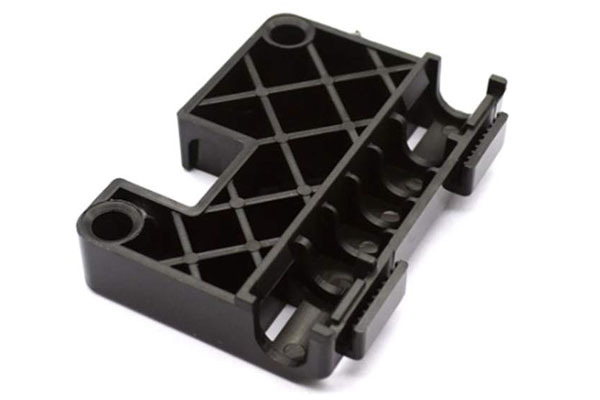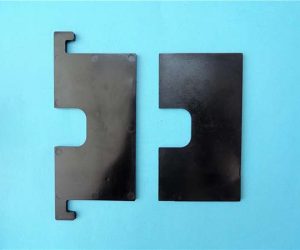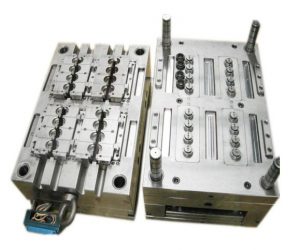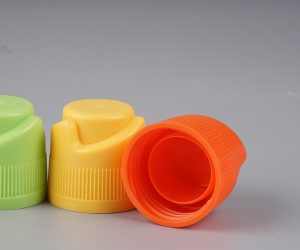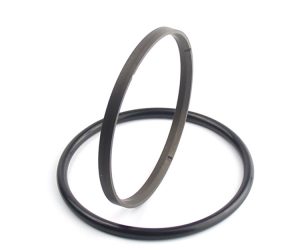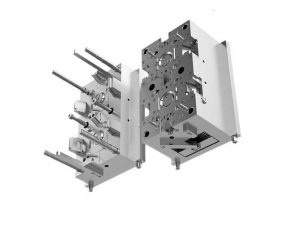1. Introduction: The Precision Paradigm of CNC Metal Milling
In the fast - evolving landscape of modern manufacturing, precision stands as the bedrock upon which innovation thrives. Nowhere is this more evident than in industries where the tiniest deviation in component tolerances can have far - reaching consequences, ranging from product malfunctions to safety hazards. This is where CNC (Computer Numerical Control) metal milling has emerged as a revolutionary technology, redefining the boundaries of what is possible in precision engineering.
CNC metal milling enables engineers to create complex metal parts with an astonishing level of accuracy, often reaching the micron - level. This means that parts can be produced with tolerances as small as a few millionths of a meter, ensuring that they fit together perfectly in assemblies. For Yigu Technology example, in the aerospace industry, components such as turbine blades need to be manufactured with extreme precision to ensure efficient engine performance. A slight deviation in the shape or dimensions of these blades can lead to reduced fuel efficiency, increased emissions, and even engine failure. CNC metal milling allows for the production of these critical components with the tight tolerances required to meet the stringent demands of the aerospace sector.
One of the key advantages of CNC metal milling is its flexibility. Traditional milling methods often require significant setup time and the use of specialized jigs and fixtures for each new part design. In contrast, CNC milling machines are programmed using computer - aided design (CAD) and computer - aided manufacturing (CAM) software. This means that new part designs can be quickly and easily input into the system, and the machine can be reconfigured to produce them with minimal downtime. This flexibility makes CNC metal milling ideal for both small - batch production runs, where the ability to quickly switch between different part designs is crucial, and large - scale manufacturing, where consistency and efficiency are key.
Efficiency is another area where CNC metal milling excels. These machines can operate continuously, 24 hours a day, 7 days a week, with minimal human intervention. They can also perform multiple machining operations in a single setup, such as milling, drilling, and tapping, reducing the need for multiple machine setups and the associated time and cost. Additionally, CNC milling machines are equipped with advanced features such as high - speed spindles and automated tool changers, which further enhance their productivity. For instance, a high - speed spindle can rotate at speeds of up to 100,000 revolutions per minute, allowing for faster material removal rates and shorter machining times.
2. The Technical Foundations: Engineering Precision at the Micron Scale
2.1. The Mechanics of CNC Metal Milling
CNC (Computer Numerical Control) metal milling is a subtractive manufacturing process where computer - programmed tools remove material from a metal workpiece to create precise geometries. This process is a far cry from traditional manual milling, which relies heavily on the operator's skill and experience. In CNC metal milling, the machine is guided by a set of instructions generated from a CAD/CAM software, ensuring consistent and accurate results.
Key components play crucial roles in the precision - delivery of CNC metal milling:
- High - Rigidity Machine Tools: The frames of high - end CNC milling machines are often constructed from stress - relieved cast iron or granite. These materials have excellent damping properties, which minimize thermal and vibrational distortions. For high - precision applications, such as aerospace component manufacturing, these machines can achieve positional accuracy within ±0.001mm. This level of accuracy is essential when creating parts that need to fit together perfectly in complex assemblies. For example, in the production of jet engine components, the slightest misalignment can lead to inefficiencies or even catastrophic failures.
- Advanced Spindle Systems: High - speed spindles are a cornerstone of modern CNC milling. Spindles that can reach speeds of up to 40,000 RPM, especially those equipped with ceramic bearings, enable ultra - fine cuts. The use of ceramic bearings reduces friction and heat generation, allowing for more precise machining. This results in surface finishes as low as Ra 0.2μm. In the automotive industry, components like engine pistons require such smooth surface finishes to reduce friction and improve fuel efficiency. A rough - finished piston would cause increased wear and tear on the engine, leading to reduced performance and a shorter lifespan.
- Multi - Axis Capability: 5 - axis CNC machines have revolutionized the manufacturing of complex parts. These machines can navigate complex angles and free - form surfaces with ease. Compared to 3 - axis systems, 5 - axis machines can reduce setup times by 50%. This is because they can access multiple sides of a workpiece without the need to re - position it. For instance, in the production of titanium alloy parts for medical implants, 5 - axis machines can create features like 0.5mm - thick walls. These thin - walled structures are challenging to produce with traditional machining methods but are easily achievable with 5 - axis CNC milling, opening up new possibilities for the design and functionality of medical devices.
2.2. Precision vs. Traditional Machining: A Data - Driven Comparison
When comparing CNC metal milling to traditional machining, the differences in precision, efficiency, and overall performance are staggering. The following Yigu Technology table clearly outlines these differences:
| Parameter | Traditional Milling | CNC Metal Milling | Improvement |
| Dimensional Accuracy | ±0.05mm | ±0.001mm | 98% |
| Surface Roughness (Ra) | 1.6μm | 0.4μm | 75% |
| Material Removal Rate | 50 cm³/min | 200 cm³/min | 300% |
| Tool Life (for Inconel) | 2 hours | 6 hours | 200% |
Dimensional Accuracy: In traditional milling, achieving a dimensional accuracy of ±0.05mm is considered quite good. However, CNC metal milling can achieve an accuracy of ±0.001mm. This means that parts produced by CNC milling are far more likely to fit together perfectly in an assembly without the need for additional finishing or adjustment. In the production of high - end optical equipment, where lenses and other components need to be precisely aligned, this high level of dimensional accuracy is non - negotiable.
Surface Roughness: A lower surface roughness value indicates a smoother surface. Traditional milling typically results in a surface roughness (Ra) of 1.6μm. In contrast, CNC metal milling can achieve a surface roughness of 0.4μm. This smoother surface finish is beneficial in many applications, such as in the manufacturing of hydraulic components. A smoother surface reduces the risk of fluid leakage and improves the overall efficiency of the system.
Material Removal Rate: The material removal rate is a measure of how quickly a machine can remove material from a workpiece. CNC metal milling has a material removal rate of 200 cm³/min, which is four times higher than that of traditional milling (50 cm³/min). This higher rate means that CNC machines can produce parts more quickly, increasing productivity. In large - scale manufacturing, such as in the production of automotive parts, this increased speed can lead to significant cost savings.
Tool Life: When machining tough materials like Inconel, tool life is a critical factor. In traditional milling, the tool life for Inconel is only 2 hours. However, with CNC metal milling, the tool life can be extended to 6 hours. This is due to the more precise control of the cutting parameters in CNC milling, which reduces wear and tear on the tool. A longer tool life means fewer tool changes, which in turn reduces downtime and increases overall productivity.
3. Unmatched Advantages: Why CNC Metal Milling Leads in Precision
3.1. Mastery of Exotic Materials
Modern industries, especially aerospace, medical, and high - performance automotive, are constantly pushing the boundaries of material usage. High - strength, low - weight materials such as titanium (Ti - 6Al - 4V), Inconel 718, and tungsten carbide have become the materials of choice for many critical components. However, machining these exotic materials presents a unique set of challenges, which CNC metal milling has proven adept at overcoming.
Thermal Management: When machining titanium, for Yigu Technology example, the high - pressure coolant systems used in CNC milling are a game - changer. These systems, operating at pressures of up to 100 bar, can reduce tool temperatures by a remarkable 200°C during the machining process. This not only extends the tool life by 30% but also plays a crucial role in maintaining the dimensional stability of the workpiece. In the aerospace industry, where components like engine compressor blades are often made of titanium, this is essential. A Boeing 787 Dreamliner's titanium wing rib, machined via CNC, is a prime example. By optimizing feed rates and toolpath algorithms, the weight of the rib was reduced by 15% while still meeting the Federal Aviation Administration (FAA) fatigue standards. This weight reduction directly contributes to improved fuel efficiency and overall aircraft performance.
Vibration Damping: In the case of nickel - based superalloys like Inconel 718, which are used in gas turbine engines due to their high - temperature strength and corrosion resistance, vibration control is crucial. Active vibration control systems in CNC milling machines minimize chatter, enabling the machining of thin - wall structures with wall thicknesses as low as 0.8mm or even less without deformation. This is vital for components such as turbine casings, where thin - walled sections can reduce weight while maintaining structural integrity.
3.2. Complex Geometry Expertise
CNC metal milling has revolutionized the production of parts with complex geometries, creating features that were previously unattainable or extremely difficult to produce with traditional machining methods.
Sharp Internal Corners: In the automotive industry, the production of plastic parts often requires molds with sharp internal corners. CNC milling can achieve radii as small as 0.05mm. This level of precision is essential for creating intricate mold cavities that can accurately replicate the fine details of automotive interior components, such as dashboard panels or door handles. The ability to produce such sharp corners ensures that the final plastic parts have a smooth and seamless appearance, meeting the high - quality standards expected by consumers.
Deep - Hole Drilling: For hydraulic components, deep - hole drilling is a critical operation. CNC milling can drill holes with an impressive depth - to - diameter ratio of 50:1. For instance, it can create 1mm - diameter holes in 50mm - thick stainless - steel workpieces. These deep and precise holes are used for fluid channels in hydraulic valves and cylinders, where the smooth flow of hydraulic fluid is essential for the proper functioning of the system. Any deviation in the hole's diameter or straightness could lead to leaks or inefficient operation.
Tapered Surfaces: In the aerospace industry, turbine blades are designed with tapered surfaces to optimize aerodynamic efficiency. CNC milling's 5 - axis interpolation capabilities enable the creation of 30° tapered cuts in these blades. This allows for better air - flow around the blades, reducing turbulence and increasing the overall efficiency of the turbine engine. The ability to accurately machine these tapered surfaces is a significant advantage of CNC metal milling over traditional methods, which may struggle to achieve the required precision and consistency.
4. Industry Applications: Where Precision Defines Performance
The impact of Yigu Technology CNC metal milling is most pronounced in industries where precision is not just a preference but a necessity. Let's explore some of these industries in detail.
4.1. Aerospace: Crafting Flight-Critical Components
The aerospace industry demands the highest levels of precision and reliability. Components in aircraft engines and airframes must withstand extreme conditions, from high - temperature, high - pressure environments in jet engines to the stresses of takeoff and landing.
Turbine Blades: Turbine blades in jet engines are made from materials like Inconel 718, a nickel - based superalloy known for its high - temperature strength and corrosion resistance. CNC - machined Inconel 718 blades can achieve a chordal tolerance of 0.01mm. This level of precision ensures that the blades have the exact shape required to optimize airflow through the engine. A study by Rolls - Royce found that by improving the precision of turbine blade manufacturing, engine efficiency could be increased by 5%. This increase in efficiency directly translates to reduced fuel consumption. For a large commercial airliner like the Airbus A380, which can consume up to 12,000 liters of fuel per hour during flight, a 5% reduction in fuel consumption can result in significant cost savings over the lifespan of the aircraft.
Landing Gear Parts: Landing gear parts, such as those made from high - strength aluminum alloy 7075 - T6, must be able to withstand the repeated impact of landings. These components are machined to an accuracy of ±0.002mm. This high - precision machining allows the parts to maintain their structural integrity over a large number of landing cycles. In fact, these parts can withstand over 50,000 landing cycles without showing signs of fatigue. This is crucial for ensuring the safety of aircraft during landing and takeoff. The following Yigu Technology table shows the comparison of fatigue resistance between traditionally - manufactured and CNC - machined landing gear parts:
| Manufacturing Method | Number of Landing Cycles to Fatigue |
| Traditional Machining | 30,000 - 35,000 |
| CNC Machining | 50,000+ |
4.2. Medical Devices: Micron - Level Precision for Life - Saving Tools
In the medical device industry, precision is a matter of life and death. Components in surgical instruments and implants need to be manufactured with extreme accuracy to ensure proper functionality and patient safety.
Orthopedic Implants: Cobalt - chromium knee implants are designed to replace damaged knee joints. These implants are milled to a fit accuracy of ±0.005mm based on patient - specific MRI data. This personalized and precise manufacturing process enables the implants to achieve a 95% osseointegration rate, which is the process by which the implant fuses with the patient's bone. A high osseointegration rate reduces the risk of post - surgical complications such as implant loosening. In a study of 100 patients who received CNC - milled cobalt - chromium knee implants, only 5 patients experienced minor post - surgical issues, compared to a 15 - 20% complication rate in patients who received traditionally - manufactured implants.
Surgical Instruments: Micro - milled stainless - steel forceps are an example of how CNC metal milling can enhance the performance of surgical instruments. These forceps have jaws that are only 0.3mm thick and a surface finish of Ra 0.1μm. The thin jaws allow for more precise grasping and manipulation during minimally invasive procedures, while the smooth surface finish reduces tissue adhesion. This enhanced dexterity can lead to better surgical outcomes, such as reduced tissue damage and shorter recovery times for patients.
4.3. Automotive: Driving Innovation in Electric Vehicles
The automotive industry, especially in the realm of electric vehicles (EVs), is increasingly relying on CNC metal milling to achieve high - performance components and lightweight designs.
EV Motor Components: In electric vehicle motors, components like copper rotors are CNC - machined to achieve a concentricity of ±0.01mm. This high level of concentricity minimizes electromagnetic interference, which is crucial for improving motor efficiency. Motors with CNC - machined rotors can achieve an efficiency of up to 97%. Since motor efficiency directly impacts the range of an electric vehicle, this improvement can significantly extend the driving range. For Yigu Technology example, a Tesla Model 3 with a more efficient motor due to CNC - machined components could potentially have a 10 - 15% increase in its driving range on a single charge.
Lightweight Structures: Aluminum alloy chassis parts are being designed with lattice cores, which are machined via CNC. These lattice - structured parts can reduce the weight of the chassis by up to 40% while still maintaining the necessary crash resistance. This weight reduction is essential for improving the energy efficiency of electric vehicles and aligns with global efforts to reduce carbon emissions. A study by Ford found that for every 10% reduction in vehicle weight, there is a 6 - 8% improvement in energy efficiency. As such, the use of CNC - machined lightweight components in EVs is a significant step towards a more sustainable future in transportation.
5. Conclusion: The Indispensable Edge of CNC Metal Milling
In Yigu Technology summary, CNC metal milling is far more than just a run - of - the - mill manufacturing process; it is the vanguard of precision engineering, a technological marvel that has redefined the very fabric of modern manufacturing. By marrying the mechanical prowess of high - end machine tools, a deep - seated understanding of material science, and the digital innovation of Industry 4.0, CNC metal milling has become an essential tool for industries where precision is not a luxury but a necessity.
The ability to achieve micron - level precision, as demonstrated by the high - rigidity machine tools, advanced spindle systems, and multi - axis capabilities, has enabled the production of components with tolerances that were once thought to be beyond the realm of possibility. This precision has not only improved the performance and reliability of products but has also opened up new avenues for innovation in design. For example, the creation of complex geometries, such as sharp internal corners, deep - hole drilling, and tapered surfaces, has allowed for the development of more efficient and functional components in industries like aerospace, medical, and automotive.
The mastery of exotic materials, which are becoming increasingly important in modern manufacturing, is another area where CNC metal milling shines. By effectively managing thermal and vibration challenges during the machining process, CNC milling can produce high - quality components from materials like titanium, Inconel, and tungsten carbide. These materials, with their unique properties of high - strength, low - weight, and corrosion resistance, are crucial for applications in extreme environments, such as aerospace engines and medical implants.
FAQ
- Q1: What is the maximum precision achievable in CNC metal milling?
- A1: CNC metal milling can achieve a dimensional accuracy of up to ±0.001mm in high - end applications. This level of precision is made possible by high - rigidity machine tools, advanced spindle systems, and multi - axis capabilities, which work together to minimize errors and ensure consistent results.
- Q2: Can CNC metal milling be used for mass production?
- A2: Yes, CNC metal milling is well - suited for mass production. Its automation capabilities, such as AI - powered toolpath optimization and continuous operation, allow for high - volume production with consistent quality. Additionally, the ability to quickly change part designs using CAD/CAM software makes it flexible for different production requirements.
- Q3: What are the challenges in machining exotic materials with CNC metal milling?
- A3: Machining exotic materials like titanium and Inconel presents challenges such as high heat generation and vibration during the machining process. These can lead to tool wear and dimensional inaccuracies. However, advanced techniques in CNC metal milling, such as high - pressure coolant systems for thermal management and active vibration control, have been developed to overcome these challenges.
